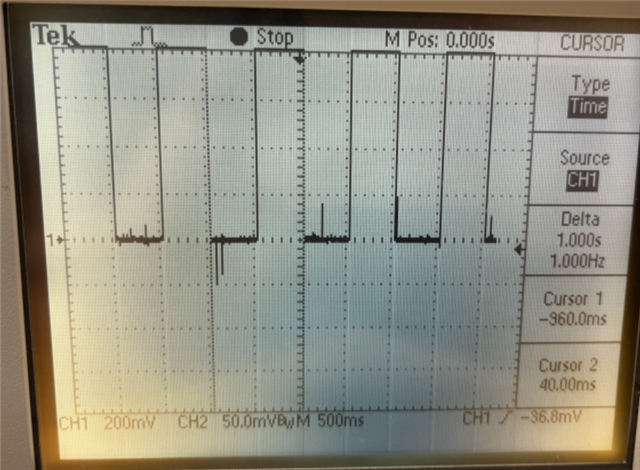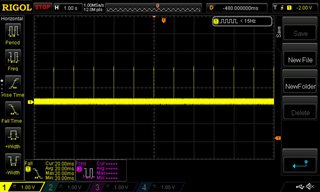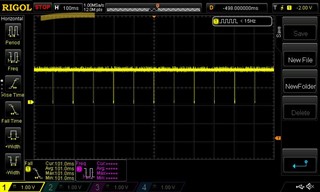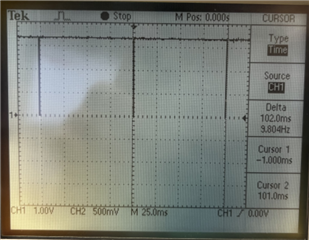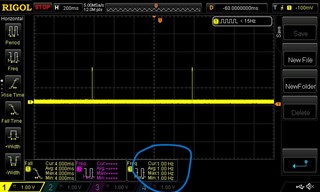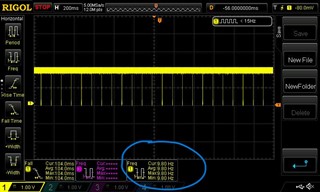Other Parts Discussed in Thread: SK-AM64B, AM6442
Tool/software:
Hi
We observer some strange frequency of PPS after re-enbaling ( echo 1 > /sys/class/ptp/ptp0/pps_enable; echo 0 > /sys/class/ptp/ptp0/pps_enable; echo 1 > /sys/class/ptp/ptp0/pps_enable). The singal is measured on GPIO1_37 (V5) output.
Why is it so?

You might see that after re-enabling PPS signal signal period is about 100 ms.s.
In device tree we have such a configuration:
&cpsw3g {
pinctrl-names = "default";
pinctrl-0 = <&cpsw_mdio0_pins_default
&rgmii1_io_bus_pins_default
&rgmii2_service_pins_default
>;
cpts@3d000 {
ti,pps = <7 1>;
};
};
#define TS_OFFSET(pa, val) (0x4+(pa)*4) (0x10000 | val)
×ync_router {
pinctrl-names = "default";
pinctrl-0 = <&mcu_cpts_pps>;
/* Example of the timesync routing */
mcu_cpts_pps: mcu-cpts-pps {
pinctrl-single,pins = <
/* pps [cpts genf1] in22 -> out37 [cpts hw8_push] */
TS_OFFSET(37, 22)
/* pps [cpts genf1] in22 -> out25 [SYNC1_OUT pin] */
TS_OFFSET(25, 22)
>;
};
};



